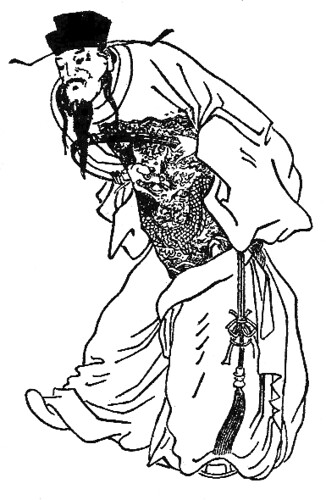 Archaeologists believe they may have found the remains of Cao Cao, a Chinese warlord renowned for his role during Chinas Three Kingdoms period.
Archaeologists believe they may have found the remains of Cao Cao, a Chinese warlord renowned for his role during Chinas Three Kingdoms period.
This past weekend Chinese archaeologists announced the find, saying they had discovered the ancient rulers tomb in Chinas Henan Province, near Anyang.
Cao Cao, who lived from 155 to 220 AD, is a major historical figure in China. Both a military general and a poet, he established himself as a king of his own state while fighting to unite the country under his rule. Cao Caos life was later romanticized in Chinese literature, with him being cast as a cruel tyrant.
The discovery of the tomb includes the remains of three bodies and numerous artifacts. Liu Qingzhu, an archaeologist in Beijing, said in an interview that there were four main reasons why experts believe the tomb likely belongs to Cao Cao.
- Location: The tomb is found near the former capital of the Kingdom of Wei, which Cao Cao founded and ruled over.
- Built for a king: The scale of the tomb matches what a king of that time would be buried in. The tomb is also built in the same styles used by Cao Caos kingdom.
- Inscriptions: Dozens of artifacts within the tomb are inscribed with lettering that indicates it belonged to the king of Wei. A pillow made out of rock carries the inscription: “The King Wu of Wei often uses this comfort neck stone.”
- Bones: Of the three bodies found in the tomb, one is a male that is aged to in his 60’s. This corresponds with historical records which say Cao Cao died when he was 65.
“Looking at all this evidence, one can say that the tomb has to belong to Cao Cao,” Liu said.
Excavations at the tomb began last December. But authorities didnt become aware of it until they seized looters who were found carrying relics belonging to the site.
The tomb itself is 740 square meters in size, with a 40 meter passage that leads down to the chamber. The two other bodies found in the tomb are both women, one aged in her 50s, the other in her early to mid 20s. The older woman is thought to be one of Cao Caos wives, while the younger is believed to be her escort or a possible concubine.
Even as the tomb had already been looted, archaeologists have found more than 250 artifacts, including gold, silver, jade, as well as stone tablets.
The recent archaeology find will no doubt reveal more about Cao Cao, who has suffered from a bad reputation in China. One of the countrys most famous historical novels “Romance of The Three Kingdoms” depicts him as a villain. Ancient records, however, describe him in a more positive light, portraying him as a strong ruler.
Nevertheless, Cao Cao has become a popular character in Chinese culture, being featured in the countrys opera, as well as TV shows and movies. He is also a character in a popular Japanese video game series set during the Three Kingdoms period.

